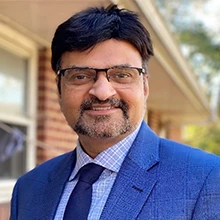 Nursena Acar / World Bank
Nursena Acar / World Bank
As the impact of pandemic started being felt in April 2020, the World Bank’s policy note on Agile Treasury Operations During COVID-19 emphasized the need for treasuries to adopt agile practices for responsiveness and flexibility while providing necessary controls to support value for money, minimize fraud and corruption, and maintain citizen trust and confidence. Now, in October 2022, with the brunt of the pandemic behind us, it may be useful to reflect on the broader narratives on whether treasuries were really agile during the crisis period, but with necessary controls. Here are few observations:
- Countries that quickly adapted regular public financial management (PFM) processes to needs of crisis did better: Many jurisdictions achieved an agile response with slight modifications to the PFM processes, without compromising transparency and controls. For example, France and Austria created new programs and subprograms within existing budget structures. Kosovo opened a special bank account to channel all COVID-related funds—donations, loans, and grants—into one bank account , but made it a part of the single treasury account. Chile allowed single-source or direct procurements but the scope of these limited to only emergency items. Also, procuring entities were required to publish the contract information later on the government portal.
Several countries with pre-existing emergency financial rules were able to respond quickly to trigger them. In contrast, risks were higher in jurisdictions where regular PFM processes were suspended or informally overlooked. Extra-Budgetary Funds (EBFs) were created in some jurisdictions with lower levels of budgetary controls and transparency. Large number of single-source/direct contracts, which overlooked several regular PFM controls, added to the risks of efficiency in COVID-19 expenditure. These experiences emphasize the need to establish, and periodically revisit, and adjust emergency financial rules even during normal times.
- Cash flows were the focus of treasury operations: Cash-flow management took center stage in treasury operations during the pandemic. Countries with well-established cash-management practices were able to respond better. Several innovations, including decisions in shorter timeframes, were made in many countries. The pandemic experience reaffirmed that benefits of a treasury single account (TSA) can only be fully realized if there is a credible revenue forecast, a realistic budget, and commitment controls, even in countries with strong TSA systems to sweep in and consolidate cash.
- Tracking expenditure was easier than isolating and identifying COVID19 expenditure: Countries used various methods including, in some cases, exclusive budget and accounting codes to track COVID-19 expenditure with a wide range of results. Generally, treasuries were able to track expenditure and attribute it to particular spending agency/program. However, classifying the expenditure as directly related to COVID-19 or otherwise was not easy, mainly due to definitional issues of what constituted COVID-19-expenditure. While the media reported government announcements of large expenditure packages relating to COVID-19, government balance sheets were only able to present these expenditures in traditional line items/programs/spending agencies, rather than listing them as spent exclusively towards due to COVID-19.
- COVID19 brought treasuries and health ministries closer to each other in many countries: COVID-19 saw greater demand from health ministries for flexible and responsive treasury procedures. Often, decisions on adjustments to treasury processes to bring in agility were taken in consultancy with health ministry officials. The global need for PFM systems that enable efficient health service delivery was more firmly established with several successful innovations.
- Oversight rightly started slow, but scaled up fast in most jurisdictions: At the beginning of the pandemic, oversight agencies and processes rightly provided executive governments the space to respond quickly with minimal requirements for information. Some countries saw concurrent/real-time audits by internal auditors with minimal time lags. Most supreme audit institution (SAI) prepared themselves during the initial phase of the pandemic and only later started audits of COVID-19 transactions and processes to ensure accountability. The agility with which some SAIs swung into action presents global learning experiences.
The average year-on-year increase in absolute budget deviations between 2019 and 2020, when the COVID-19 crisis emerged, was 54 percent , according to the 2022 Global Report on Public Financial Management issued by PEFA. Governments spent more to tackle the crisis. Treasuries were agile and responsive to ensure money was spent on COVID-19 response, but concerns remain on efficiency, transparency, and accountability of agile operations. The experiences from agile treasury operations during COVID-19 provides enormous opportunities to learn and prepare for the next crisis, on which treasuries need to focus going forward.
Dedication: This blog is dedicated to our dear departed colleague Leah April, Senior Public Sector Specialist, World Bank and co-author of the April 2020 World Bank paper on Governance COVID19 Response: Agile Treasury Operations during COVID-19.




Join the Conversation